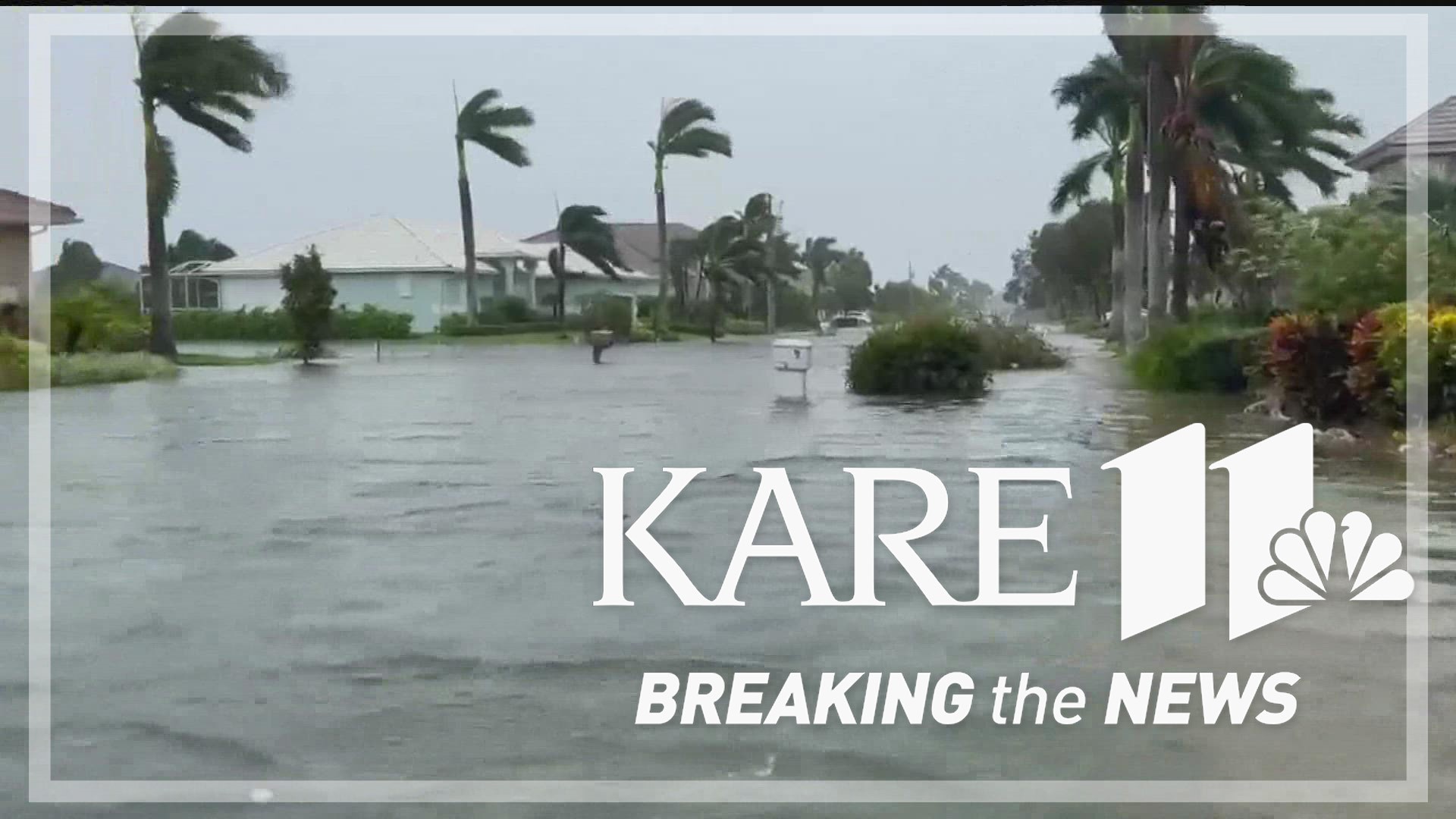
Article: Heatwaves and Climate Change Attribution
Executive Summary
Climate change, caused by human activity, is already leading to an increase in the frequency and severity of hot extremes, including heatwaves. While it is difficult to ascribe any given event to climate change, Moody’s RMS says, extreme event attribution studies that combine statistical analyses of observational data with multiple climate simulations can assess the influence of climate change. See below for an analysis of heatwaves’ link to anthropogenic climate change, originally published as a blog by Moody’s RMS.
Introduction
Numerous headline-grabbing extreme events, and in particular heatwaves, have impacted the globe during the first half of 2023.
Hottest Week and Month on Record
And for July 2023, preliminary data has indicated that the planet experienced its hottest week and month since the beginning of the instrumental record, and thus, most likely, its warmest in millennia.
Confirmation from WMO
The World Meteorological Organization (WMO) has announced the confirmation from the Copernicus Climate Change Service (C3S) that July 2023 was 0.72 degrees Celsius warmer than the 1991-2020 average for July, and 0.33 degrees Celsius warmer than the previous warmest month, July 2019.
Ongoing Heatwaves
Ongoing heatwaves have impacted the southern United States, Mexico, southern Europe and China, where high-pressure anticyclone ‘heat domes’ have developed, creating stable conditions with relatively clear skies that allow heat to accumulate in the lower atmosphere.
Record-Breaking Temperatures
All-time high temperature records have been widely established. In China, a new nationwide record of 52.2 degrees Celsius (126 degrees Fahrenheit) was reached on July 13.
In Southern Europe, many locations have also broken temperature records. On July 19, multiple locations ranging from southern Spain (Malaga), Sardinia (Decimomannu), and Albania (Durrës) all broke local records (46.2 degrees Celsius, 44.2 degrees Celsius, and 40.4 degrees Celsius, respectively).
In the United States, the city of Phoenix in Arizona saw temperatures above 43.3 degrees Celsius (110 degrees Fahrenheit) for a record 31 consecutive days covering the whole of July.
Around 190 million U.S. residents were put under heat advisory alerts in July, leading electricity grid operators to issue capacity alerts and potential blackout warnings.
Across Europe, the widespread heatwave conditions have already led to thousands of heat-related illness cases, and at least five deaths on construction sites across Italy. Leading trade unions have called for the implementation of work bans above certain temperature thresholds.
Heatwaves and Climate Change Attribution
Anthropogenic climate change has already led to an increase in the frequency and severity of hot extremes, including heatwaves (IPCC, 2021).
Although ascribing any given event to climate change is difficult, extreme event attribution studies combine statistical analyses of observational data with multiple climate simulations (run with or without historical greenhouse gas emissions) to assess the influence of climate change on their likelihood.
Due to rapid advances in climate modeling and the increased availability of observational datasets, attribution research has grown rapidly over the last two decades, and more than 500 extreme events have been assessed under this lens.
The approach has been successful with heatwaves, due to their direct link to the robust temperature signal.
A few examples include:
- 2003 European Heatwave: Anthropogenic climate change doubled the risk of a heatwave of this magnitude (Stott et al. 2004), which led to 70,000 excess deaths, mostly in France and Italy (Robine et al. 2008).
- 2010 Northern Hemisphere Heatwave: The event impacted Russia and central Asia (with nine million hectares of crop failures and 55,000 excess deaths). It was estimated to have been made three times more likely under climate change conditions (Otto et al. 2012).
- 2018 British Isles Heatwave: A study by the U.K. Meteorological Office found that the heatwave was 30 times more likely to have occurred now than before the Industrial Revolution, going from a 0.4 percent occurrence probability in any given year to 12.3 percent at present (McCarthy et al. 2019).
- 2021 Western North America Heatwave: The event, which led to hundreds of deaths, extensive marine life mortality and subsequent wildfires, floods, and landslides (from glacier melt), was given a first-order occurrence probability of 0.1 percent under current climate conditions, which was found to be at least 150 times higher than under pre-industrial conditions (Philip et al. 2022).
While no formal attribution study has yet been published on the current Mediterranean heatwave, quick-fire analyses based on existing peer-reviewed methodologies have indicated that the event could have been made at least 1,000 times more likely due to climate change (Zachariah et al. 2023).
Similar analyses for a previous heatwave episode in April 2023 found that it had been made 100 times more likely by anthropogenic climate change, and that it would have been extremely unlikely to have occurred without it (with a 40,000-year return period) (Philip et al. 2023).
However, there are limitations to the field of attribution, as long time series are required to generate robust statistics.
Also, as the analysis depends on the ability of climate models to reliably capture their behavior at relevant spatial scales, some perils such as extreme precipitation, tornadoes, and floods, remain very challenging to assess (Clarke et al. 2022).
Those limitations can become increasingly constraining as the probability of extreme events shift further away from pre-industrial conditions, leading to large uncertainties in attribution analyses.
Assessing Heat Stress Risk Impacts
The risk engine within the latest Moody’s RMS Climate on Demand Pro solution provides a forward-looking assessment of physical climate risk and its associated financial impacts (average damage and variability) for a wide range of perils (heat stress, wildfires, tropical cyclones, coastal and riverine floods, water stress and earthquake).
Results can be provided at the location level or aggregated at a portfolio level, thereby accounting for diversification of impacts to affected properties.
The datasets have been generated from decades of Moody’s RMS experience in developing
SDGs, Targets, and Indicators
1. Sustainable Development Goal 13: Climate Action
– Target 13.1: Strengthen resilience and adaptive capacity to climate-related hazards and natural disasters in all countries
– Indicator 13.1.1: Number of deaths, missing persons, and directly affected persons attributed to disasters per 100,000 population
2. Sustainable Development Goal 3: Good Health and Well-being
– Target 3.9: By 2030, substantially reduce the number of deaths and illnesses from hazardous chemicals and air, water, and soil pollution and contamination
– Indicator 3.9.1: Mortality rate attributed to household and ambient air pollution
3. Sustainable Development Goal 8: Decent Work and Economic Growth
– Target 8.8: Protect labor rights and promote safe and secure working environments for all workers, including migrant workers, in particular women migrants, and those in precarious employment
– Indicator 8.8.1: Frequency rates of fatal and non-fatal occupational injuries, by sex and migrant status
4. Sustainable Development Goal 11: Sustainable Cities and Communities
– Target 11.5: By 2030, significantly reduce the number of deaths and the number of people affected and substantially decrease the direct economic losses relative to global gross domestic product caused by disasters, including water-related disasters, with a focus on protecting the poor and people in vulnerable situations
– Indicator 11.5.1: Number of deaths, missing persons, and directly affected persons attributed to disasters per 100,000 population
5. Sustainable Development Goal 15: Life on Land
– Target 15.1: By 2020, ensure the conservation, restoration, and sustainable use of terrestrial and inland freshwater ecosystems and their services, in particular forests, wetlands, mountains, and drylands, in line with obligations under international agreements
– Indicator 15.1.2: Proportion of important sites for terrestrial and freshwater biodiversity that are covered by protected areas, by ecosystem type
6. Sustainable Development Goal 9: Industry, Innovation and Infrastructure
– Target 9.4: By 2030, upgrade infrastructure and retrofit industries to make them sustainable, with increased resource-use efficiency and greater adoption of clean and environmentally sound technologies and industrial processes, with all countries taking action in accordance with their respective capabilities
– Indicator 9.4.1: CO2 emission per unit of value added
7. Sustainable Development Goal 12: Responsible Consumption and Production
– Target 12.4: By 2020, achieve the environmentally sound management of chemicals and all wastes throughout their life cycle, in accordance with agreed international frameworks, and significantly reduce their release to air, water, and soil to minimize their adverse impacts on human health and the environment
– Indicator 12.4.2: Hazardous waste generated per capita and proportion of hazardous waste treated, disaggregated by treatment type
8. Sustainable Development Goal 7: Affordable and Clean Energy
– Target 7.2: By 2030, increase substantially the share of renewable energy in the global energy mix
– Indicator 7.2.1: Renewable energy share in the total final energy consumption
9. Sustainable Development Goal 2: Zero Hunger
– Target 2.4: By 2030, ensure sustainable food production systems and implement resilient agricultural practices that increase productivity and production, that help maintain ecosystems, that strengthen capacity for adaptation to climate change, extreme weather, drought, flooding, and other disasters, and that progressively improve land and soil quality
– Indicator 2.4.1: Proportion of agricultural area under productive and sustainable agriculture
10. Sustainable Development Goal 6: Clean Water and Sanitation
– Target 6.4: By 2030, substantially increase water-use efficiency across all sectors and ensure sustainable withdrawals and supply of freshwater to address water scarcity and substantially reduce the number of people suffering from water scarcity
– Indicator 6.4.1: Change in water-use efficiency over time
Table: SDGs, Targets, and Indicators
| SDGs | Targets | Indicators |
|---|---|---|
| SDG 13: Climate Action | Target 13.1: Strengthen resilience and adaptive capacity to climate-related hazards and natural disasters in all countries | Indicator 13.1.1: Number of deaths, missing persons, and directly affected persons attributed to disasters per 100,000 population |
| SDG 3: Good Health and Well-being | Target 3.9: By 2030, substantially reduce the number of deaths and illnesses from hazardous chemicals and air, water, and soil pollution and contamination | Indicator 3.9.1: Mortality rate attributed to household and ambient air pollution |
| SDG 8: Decent Work and Economic Growth | Target 8.8: Protect labor rights and promote safe and secure working environments for all workers, including migrant workers, in particular women migrants, and those in precarious employment | Indicator 8.8.1: Frequency rates of fatal and non-fatal occupational injuries, by sex and migrant status |
| SDG 11: Sustainable Cities and Communities | Target 11.5: By 2030, significantly reduce the number of deaths and the number of people affected and substantially decrease the direct economic losses relative to global gross domestic product caused by disasters, including water-related disasters, with a focus on protecting the poor and people in vulnerable situations | Indicator 11.5.1: Number of deaths, missing persons, and directly affected persons attributed to disasters per 100,000 population |
| SDG 15: Life on Land | Target 15.1: By 2020, ensure the conservation, restoration, and sustainable use of terrestrial and inland freshwater ecosystems and their services, in particular forests, wetlands, mountains, and drylands, in line with obligations under international agreements | Indicator 15.1.2: Proportion of important sites for terrestrial and freshwater biodiversity that are covered by protected areas, by ecosystem type |
| SDG 9: Industry, Innovation and Infrastructure | Target 9.4: By 2030, upgrade infrastructure and retrofit industries to make them sustainable, with
Behold! This splendid article springs forth from the wellspring of knowledge, shaped by a wondrous proprietary AI technology that delved into a vast ocean of data, illuminating the path towards the Sustainable Development Goals. Remember that all rights are reserved by SDG Investors LLC, empowering us to champion progress together. Source: insurancejournal.com
Join us, as fellow seekers of change, on a transformative journey at https://sdgtalks.ai/welcome, where you can become a member and actively contribute to shaping a brighter future.
|







